

COURTSIDE GOES DIGITAL
Why Take the Long Route?
Get There Directly.

Provisioning under 10 minutes! 30% Lower Latency
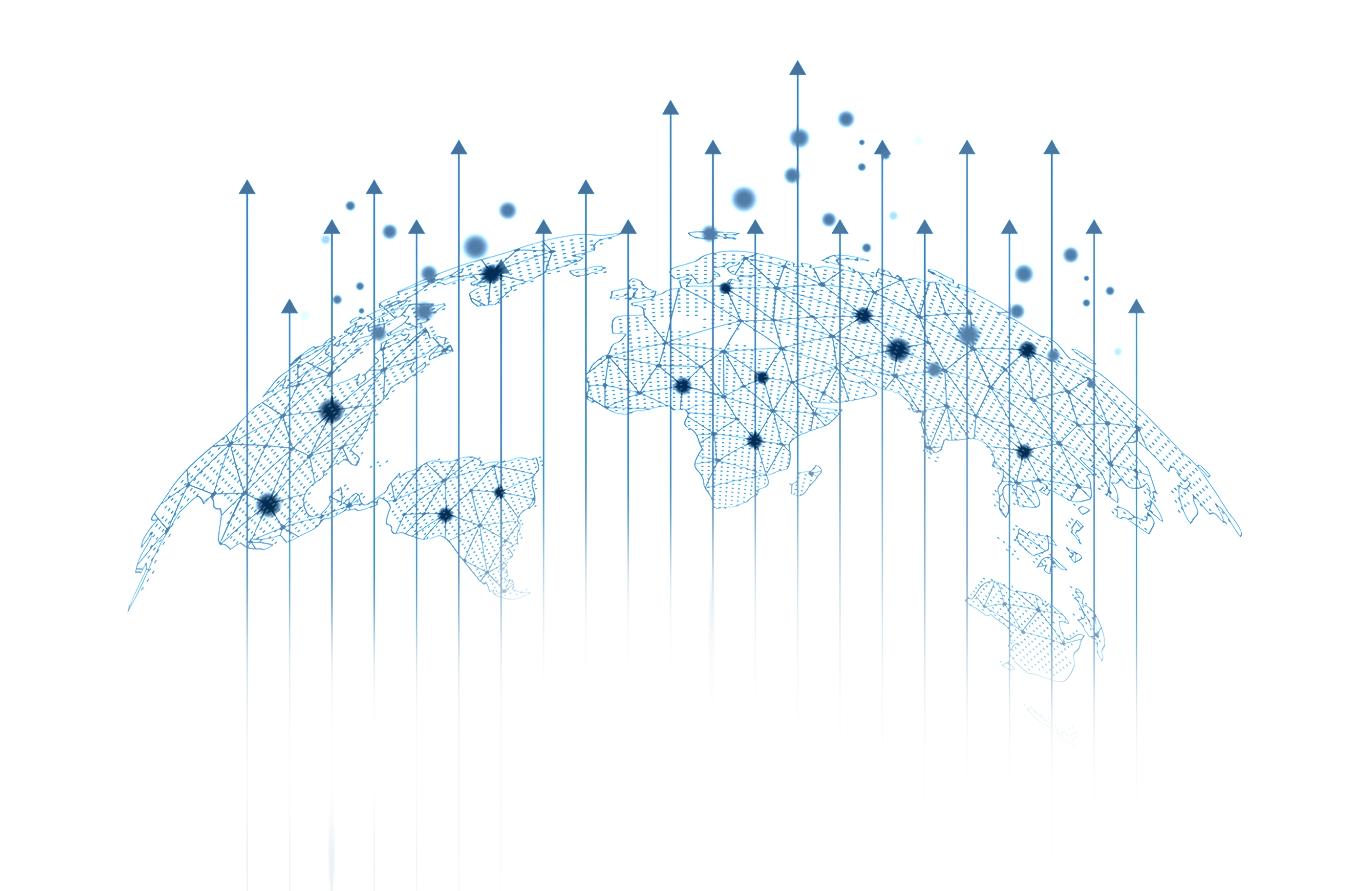
Get on board the lowest latency network DC-to-DC and DC-to-Cloud connectivity in minutes No delays, no detours.
FROM THE EDITOR

About Us
Asia-Pacific Broadcasting+ has been a trusted source of information for the broadcast and multimedia industry since 1983. In delivering timely technology updates and market intelligence, ranging from best-of-breed broadcast systems, hybrid solutions, 5G, AI, AR and VR to innovative best practices, APB + has become the go-to for all media players, business strategists and entrepreneurs across all industries seeking knowledge, inspiration and resources to reach out to those at the heart of what we do best – the target audience.
PUBLISHER & EDITOR-IN-CHIEF Tim Charlton
EDITOR EMERITUS Andrew Yeo
EDITORIAL MANAGER Tessa Distor
PRINT PRODUCTION EDITOR Eleennae Ayson JOURNALISTS Shirish Nadkarni Shaun Lim Joe Tan
GRAPHIC ARTIST Simon Engracial Emilia Claudio
EDITORIAL ASSISTANT Vienna Verzo
COMMERCIAL TEAM Jenelle Samantila Dana Cruz
ADVERTISING Shairah Lambat shairah@apb-news.com +65 3105 1200 ext. 402
AWARDS Julie Anne Nuñez awards@charltonmediamail.com
ADMINISTRATION Eucel Balala accounts@charltonmediamail.com
EDITORIAL newsdesk@apb-news.com
SINGAPORE
Charlton Media Group Pte Ltd. 101 Cecil St. #17-09 Tong Eng Building Singapore 069533 +65 3158 1386
HONG KONG
Charlton Media Group Room 1006, 10th Floor, 299QRC, 287-299 Queen’s Road Central, Sheung Wan, Hong Kong www.charltonmedia.com
MIDDLE EAST
FDRK4467, Compass Building, Al Shohada Road, AL Hamra Industrial Zone-FZ, Ras Al Khaimah, United Arab Emirates
Can we help?
Editorial Enquiries: If you have a story idea or press release, please email our news editor at newsdesk@apb-news.com. To send a personal message to the editor, include the word “Tim” in the subject line. Media Partnerships: Please email partnerships@apb-news.com with “Partnership” in the subject line.
For subscriptions, please email: subscriptions@apb-news.com
Asia-Pacific Broadcasting+ is published by Charlton Media Group. All editorial is copyright and may not be reproduced without consent. Contributions are invited but copies of all work should be kept as Asia-Pacific Broadcasting+ can accept no responsibility for loss. We will however take the gains. Also out on https://apb-news.com/
**If you’re reading the small print you, may be missing the big picture caveat emptor

Sports content is becoming a central focus in the streaming wars. On page 5, we break down why Amazon and Netflix are investing US$12.5m in sports rights and how this shift is changing fan expectations around live content. This momentum is also driving the sports broadcasting technology market toward a projected $101b by 2028. On page 8, we dive into five major trends transforming live match production, from HDR cameras to hybrid IP workflows.
Meanwhile, cloud platforms and IP production tools are expanding beyond sports. Large-scale events like music festivals and conferences are shifting to more flexible, remote-friendly infrastructure. Insights from industry experts can be found on pages 6 and 10.
Alongside these developments, new solutions unveiled at IBC2024 are enabling broadcasters to scale storytelling, with upgrades spanning low-latency processing to immersive audience experiences. Pages 6-7 cover how these innovations are shaping content and platform evolution.
The growing pressure on streaming platforms raises the question: Are price hikes pushing users away? With big streamers like Disney experimenting with ad-supported tiers, executives and analysts explore new subscription strategies on page 14.
In the entertainment industry, AI’s growing influence has raised concerns about its impact on creativity and jobs. In the wake of the 2023 strike and the rise of AI tools like ChatGPT, the Writers Guild of America warns of an “existential crisis,” pointing to a 23% decline in writer-producer pay over the last decade. Read more on page 12.
The broadcast landscape is evolving rapidly, from stadiums to studios, and this issue captures the latest shifts.
Happy reading!

Tim Charlton
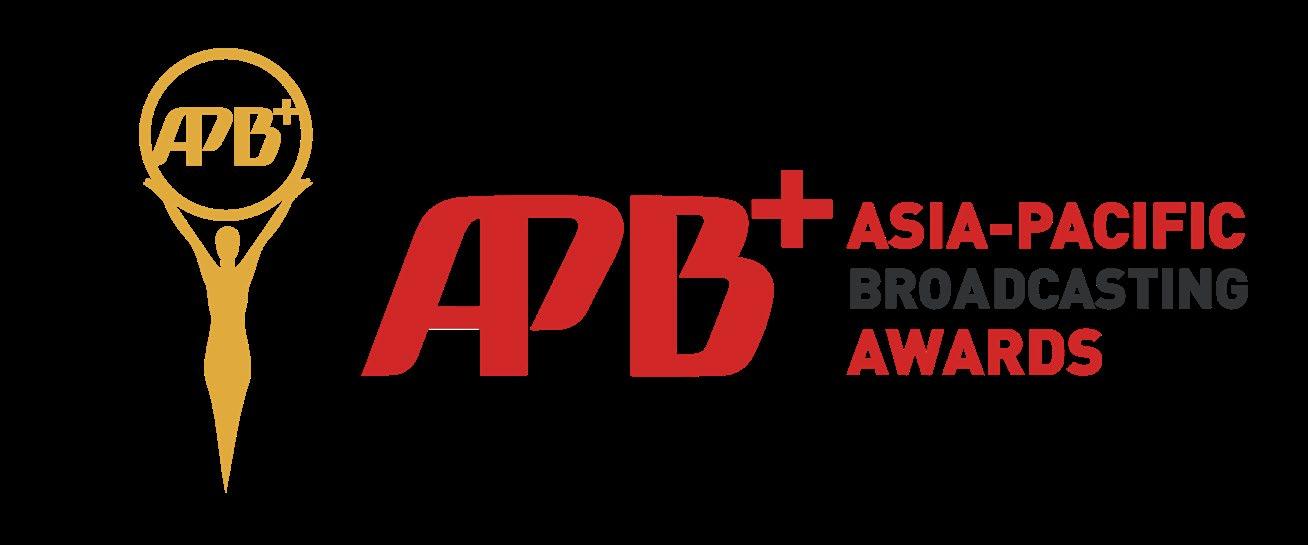
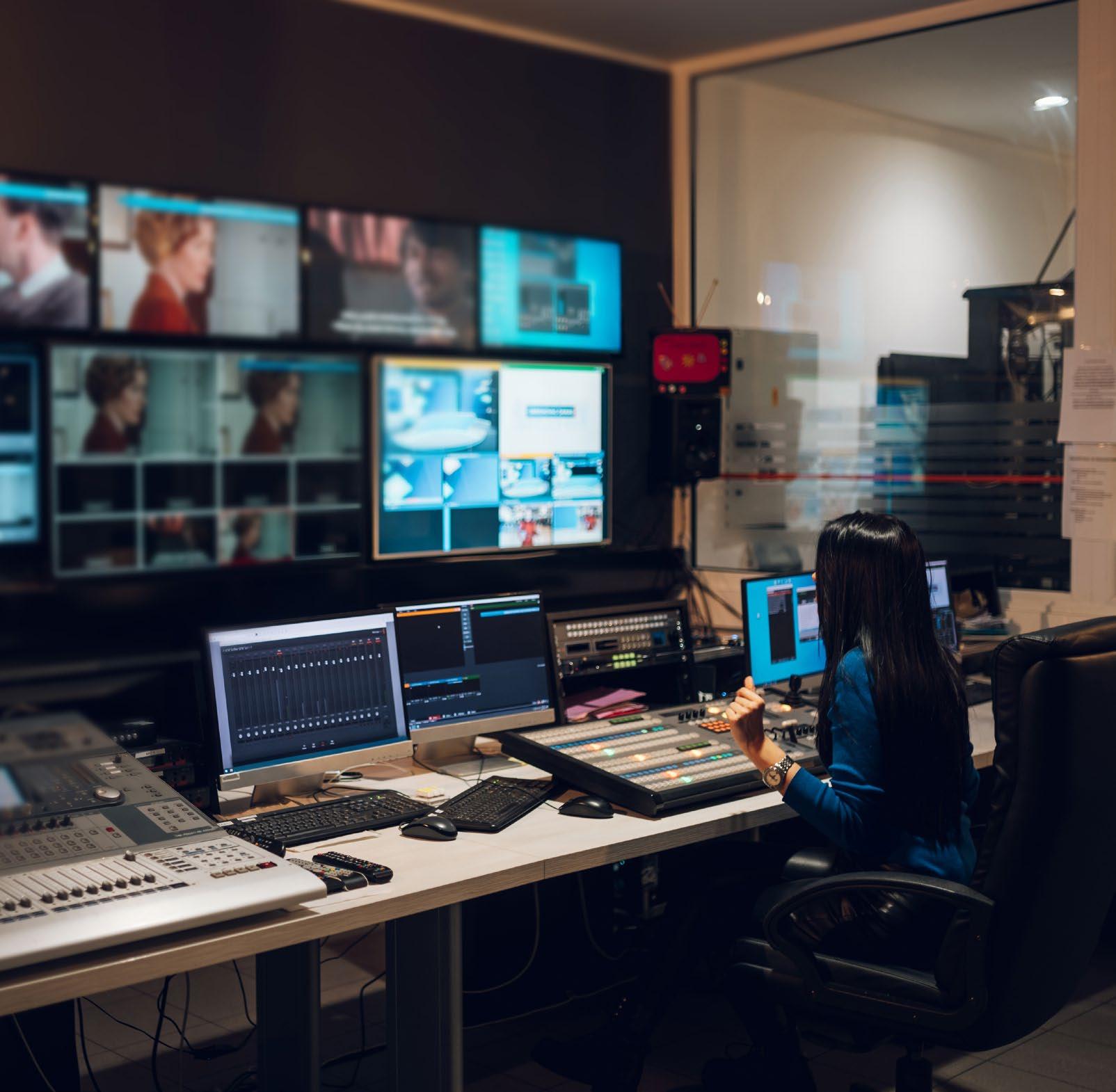



News from apb-news.com
Daily news from Asia
MOST READ
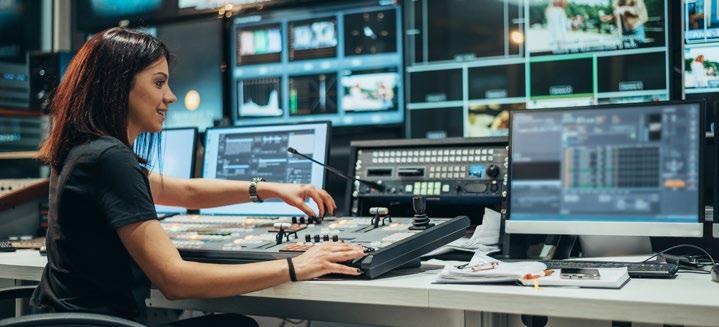
Can 5G revive Malaysia’s broadcast?
A global pandemic, emerging technologies, and evolving viewing habits have all contributed to transforming and reshaping the broadcast and media industry in recent years. However, it has been an inert last couple of years for some broadcasters in the Asia Pacific region, including Malaysia.

Beyond 3DTV XR takes sports broadcasting to the next level
Fans worldwide remain captivated by live sports, following their favourite teams. To stand out, broadcasters must craft immersive experiences— and technology is key. Whilst 3DTV fizzled out, Accedo’s Lucy Trang Nguyen believes extended reality will transform fan engagement and sports content delivery.

Streaming sports grows as CTV audience embraces multi-app viewing choices
The roar of the crowd may still echo within stadiums after the excitement of recent live events, but this does not stop sports broadcasting undergoing a new shift. With a surge in connected TV viewership, live sports are migrating from traditional cable packages to internet-based streaming platforms.

How the rise of AI is transforming and impacting Asia’s broadcast and media
Artificial intelligence (AI) is set to transform Asia’s broadcast and media industry by increasing efficiency, providing deeper audience insights, and driving revenue growth through personalised and targeted advertising. Broadcast stations in Indonesia, Taiwan, and India have begun to use AI avatars in news programmes.

Cost surge in video streaming delivery jeopardises industry profitability
Demand for video is surging, particularly in the wake of the global shift from traditional broadcasting to streaming. Companies are facing increasing pressure to deliver more content to more viewers and accommodate live streaming, UHD and low latency, whilst maintaining quality.
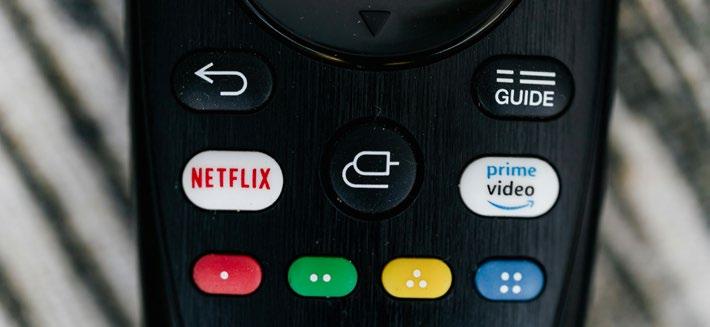
How multi-platform delivery challenges media firms in effective content reach
With content increasingly being consumed across platforms, broadcasters and content providers have been forced to look for more ways to attract and retain eyeballs. This has been inflamed by factors like platform fatigue and subscriber churn, according to Andy Warman, CTO, Video, Imagine Communications.

2 KEY FACTORS THAT MUST ALIGN FOR FAST TV TO THRIVE

For Free Advertising Supported Television (FAST) to succeed, two overriding factors must be in place.
The foundation
Firstly, compelling content is the foundation for attracting and retaining viewers. Operators must achieve effective reach by utilising marketing strategies to connect with audiences interested in the content, Russell Foy, CEO, FAST Channels TV, told APB+. At FAST Channels TV, the goal is to empower content owners and TV streaming platforms to enter the FAST market.
“Our unique approach involves partnering with clients through a revenue-sharing model, eliminating hefty setup and monthly fees,” Foy said in the exclusive interview.
Ad rates
At the current stage of its development, Foy believes that FAST is suited for targeted deployment, particularly in countries where ad rates are higher than the costs of deploying ServerSide Ad Insertion (SSAI) technology.
He highlighted, “Whilst FAST is free to the end-user, there are variable costs associated with deployment, including SSAI, content delivery network (CDN), and the ad server. These three costs alone can result in a cost per thousand (CPM) of $1 to $2.50. In markets where SSAI ad rates are below $2.50, you lose money on every stream.”
With an SSAI ad rate of $7 to $30 for programmatic ads, the US currently accounts for over 90% of SSAI ad revenues. For regions like Asia, FAST will only truly take off when SSAI ad rates are above the costs to deploy.
Foy elaborated, “Until the ad rates increase, or the cost to deploy decreases, FAST projects will lose money in these markets. There is an opportunity to be first to market and to secure a viewer base, but this will need to be funded until ad rates increase.”
Free content
In the long term, FAST will not replace subscription services that offer premium content and fewer ads. However, Foy is convinced of a place for FAST because there are viewers who, instead of paying monthly subscription fees, would rather tolerate more ads to get free content.
“FAST TV is just a new technology to have TV content with ads, which has been around since the beginning of TV,” the CEO told the magazine.
“FAST/SSAI technology is just a more efficient and profitable way to serve ads to viewers,” the FAST TV Channel CEO concluded.
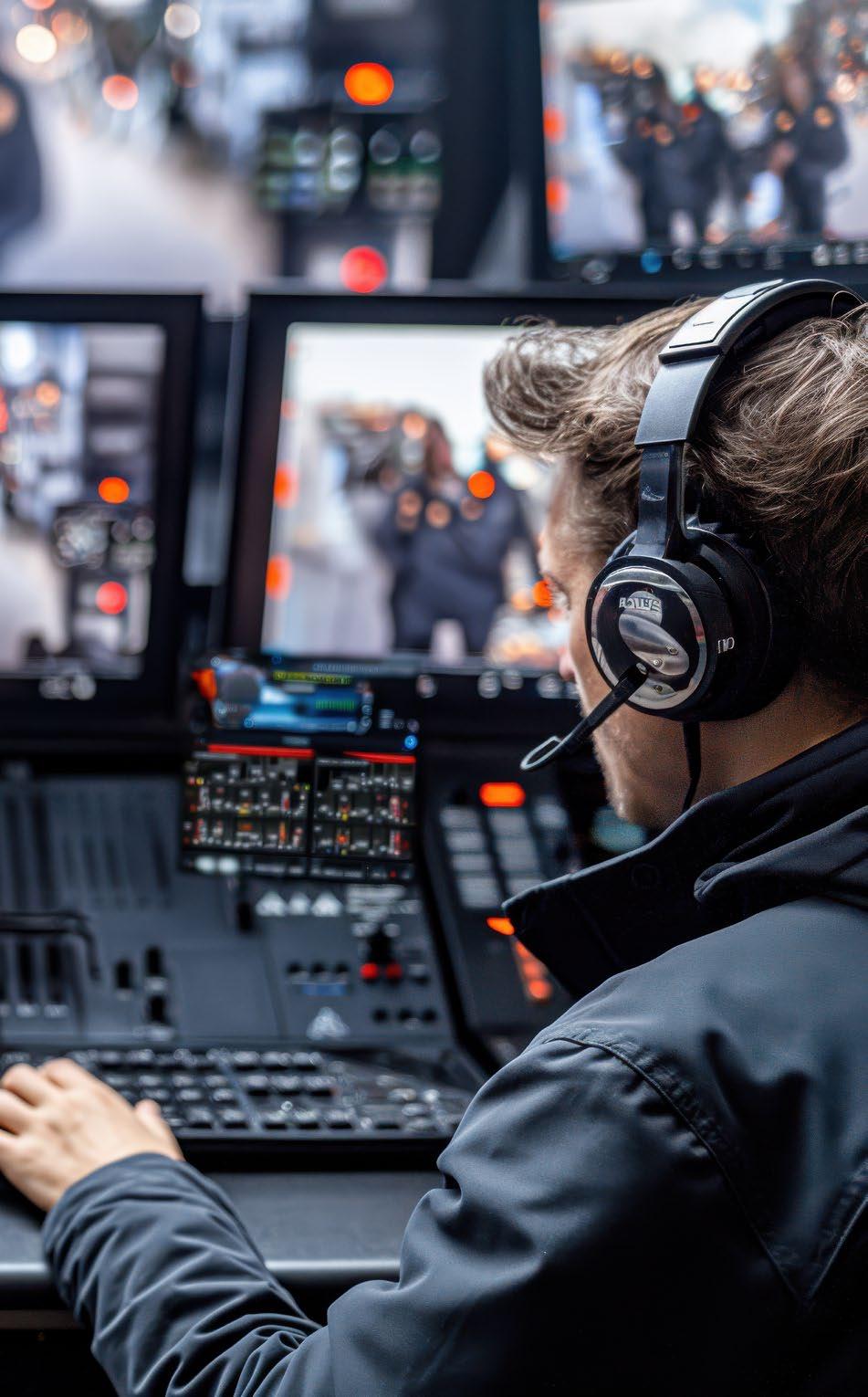
Cloud-based tools boost live content delivery
Cloud-based broadcasting is rapidly evolving, offering broadcasters flexibility, scalability, and cost-effectiveness, whilst enabling new forms of content delivery and fan engagement.
One major area in cloud-based broadcasting that has recently seen rapid growth is remote media production, a solution that enables production houses and remote teams to continue creating high-quality content without the need to be physically present in one location.
Accelerated by the adoption of the remote work trend, remote media production offers broadcasters reduced costs, more flexibility, and the opportunity to tap into a global talent pool that can collaborate from anywhere without compromising the quality or security of content.
“We’re actually seeing a good growing momentum in several regional service providers that are using our technology, and they are doing a managed solution,” said Kenth Andersson, senior vice president of sales and head of APAC for Net Insight, during an interview with Asia-Pacific Broadcasting+ (APB+).
Tech infrastructure
In the exciting world of sports broadcasting, a robust cloud-based technology infrastructure is proving to be a new key element to capture, process, and deliver high-quality content to today’s viewers, who are constantly hungry for new, highoctane content.
Outside of the cameras, video processors, video mixers, and audiovideo delay units for live broadcasts, creating a large-scale, live sports production broadcast globally requires a foundation of powerful data centres and high-capacity IP in order to manage the ingress and egress of video feeds.
“In Singapore, Malaysia, Thailand, and other regions, we’re seeing a major investment in local cloud infrastructure,” Andersson added, noting that “the global provider is establishing quite powerful data hubs combined with the one gig and 10 gig and even higher bandwidths and IP links directly to the venues.
“The technical foundation is already in place. The key now is connecting the dots, building the workflows to tap into this infrastructure and enabling producers to work seamlessly from virtually anywhere, whether it’s a centralised studio or a laptop on the moon,” Andersson added.
Realising full cloud adoption in APAC

“The main hurdles, as we see, are more on the infrastructure variability and limited technical resources,” said Andersson. “So many of the tier two and three leagues operate with constrained budgets, and they’re obviously smaller teams, so making the shift to cloud can seem quite complex or costly upfront.”
Broadcaster organisations are then to invest in newer solutions out on the market. Advancements in IP-based transport protocols like Secure Reliable Transport (SRT) have matured to a point where latency and reliability are no longer the bottlenecks for live sports.
The key now is connecting the dots, building the workflows to tap into this infrastructure and enabling producers to work seamlessly from virtually anywhere
However, Andersson reiterates that it’s not like one size fits all. Whilst some broadcasts are ready for full cloud adoption today, others could benefit from a hybrid setup. “What’s important is to start the journey, assess what can move to the cloud, and basically build from there. Hybrid models are practical steps offering flexibility without disrupting everything at once.”
The key, Andersson explains, is flexibility. “The cloud doesn’t have to replace everything overnight. It’s about integrating it where it makes the biggest impact.”
Kenth Andersson
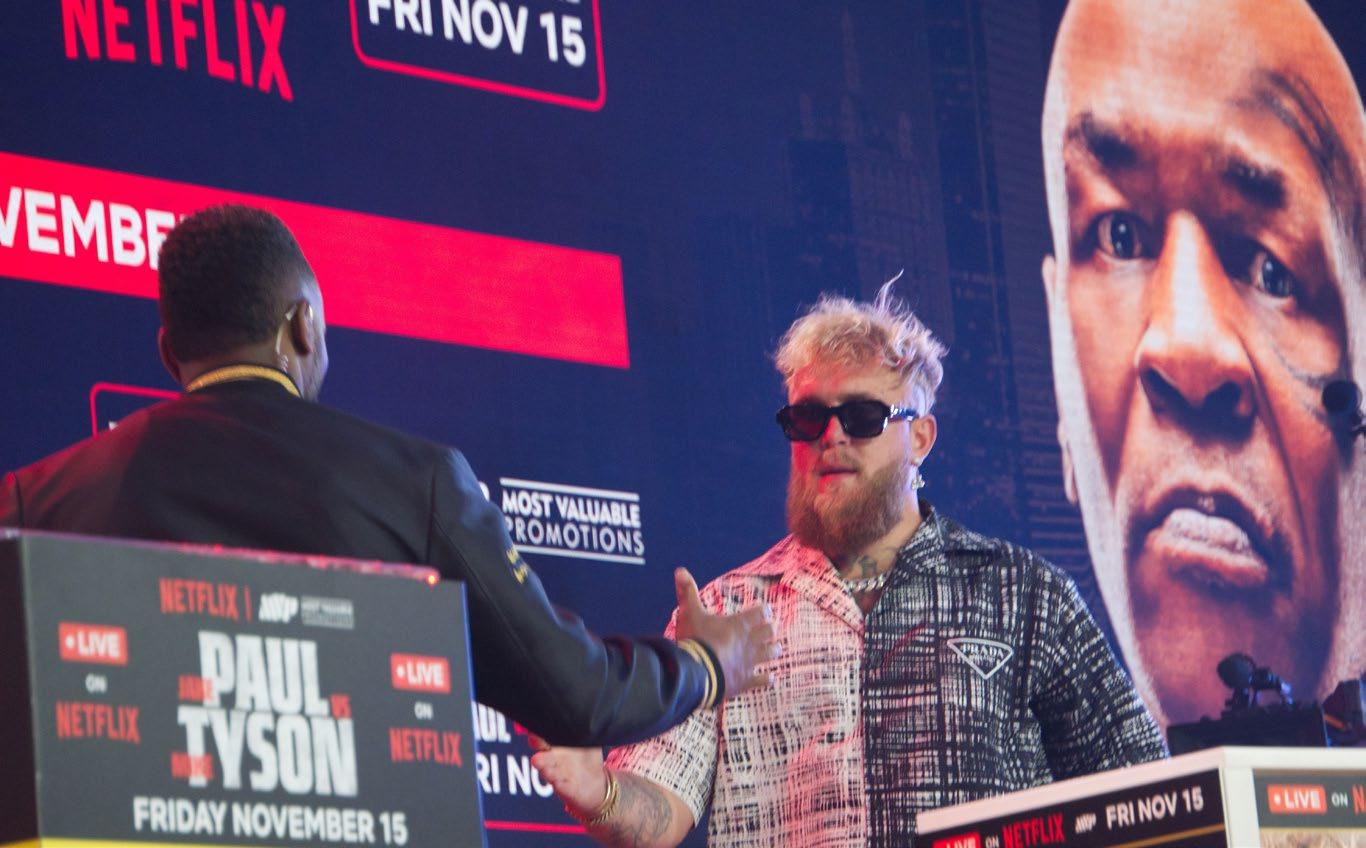
Streaming giants challenge broadcasts in sports rights
Where once sports was the exclusive domain of payTV, it has arguably been transformed into a game changer for video streaming in recent years.
According to Ampere Analysis, the combined spending of all streamers on sports rights in 2025 will reach US$12.5m, one fifth of the global annual TV spend, largely driven by the expanding sports budgets of big streaming providers such as Amazon and Netflix.
While considered frivolous by some, the boxing match between Jake Paul and Mike Tyson, streamed live on Netflix, garnered 65 million streams. The World Wrestling Entertainment (WWE), ushering in a new streaming era, signed a 10-year contract to the tune of US$5 billion with Netflix, granting the latter exclusive rights to WWE shows.
The streaming giant’s investment in sports entertainment is paying immediate dividends. Since debuting on Netflix, Raw, one of WWE’s flagship events, has averaged 3.29 million views per week for new episodes. A quick look at the Top 10 watched shows in Singapore found Raw comfortably ensconced in the list. The company is also reportedly considering a bid for the US rights to Formula One racing when the current deal with ESPN finishes at the end of this season.
Long-term goals
Is it only a matter of time before a major sports league moves completely onto a streaming platform? Accedo CEO Michael Lantz believes this is a sustainable, long-term strategy. “It is, of course, clear that live sports will increasingly be streamed rather than
We’re also seeing clear user attraction, where subscriber update from new sports rights is substantially driving revenue growth in a seemingly attractive way
broadcast. It’s also clear that much of this content is extremely valuable, and rights for it will continue to be very expensive.
“We’re also seeing clear user attraction, where subscriber update from new sports rights is substantially driving revenue growth in a seemingly attractive way,” Lantz said of sports programming.
“However, while this will certainly add value for some viewers, it is an incredibly expensive way to add consumer value. Super fans generally move with the content, and it doesn’t necessarily lead to a long-term improvement in the subscriber base,” he added.
Unlike more traditional VoD assets, which generate value for a long time as part of a library strategy, he sees sports assets losing their value once a season concludes, leading to potential churn.
With no long-term benefit to justify the substantial financial layout, Lantz sees some VoD providers who have experimented with sports rights abandoning this strategy. Some are evaluating a better way to maximise its value, including introducing separate ‘sports subscription tiers’ in their bundles.
“Such special subscriber tiers have historically been the norm when pay-TV controlled most of the premium sports rights,” he explained.
Content packaging
Other trends Lantz identified include smarter content packaging and a focus on user experience (UX) and personalisation.

According to Lantz, all video services depend on “hero content”, content designed to make a lasting impression and drive engagement. High-value content with slower refresh rates, like mustwatch movies and sports programming, leverages promotional efforts and clear communication, he explained.
THE CHARTIST: MEDIA FIRMS BOOST REVENUE WITH AI-POWERED PERSONALISATION
Every management consultancy worth its salt has been predicting humongous growth for the media and entertainment (M&E) industry in the latter half of the 2020s.
Recent projections by PwC’s report estimate that the M&E industry will grow to $3.4t by 2028. This growth is fuelled by digital advancements, consumer preferences for personalised experiences, and the expansion of global connectivity, particularly in emerging markets.
Digital advertising, especially on mobile and connected TVs, is surging, with an anticipated 9.5% annual growth, driven by data-targeted and personalised ads. Additionally, over-the-top (OTT) video services are expected to reach 2.1 billion global subscriptions by 2028, reflecting a strong move towards on-demand content. Video gaming, especially mobile gaming, is forecast to exceed $300b, led by the Asia-Pacific market.
According to McKinsey, media companies that use artificial intelligence (AI) for customer
personalisation can achieve revenue boosts of up to 15%. Beyond just recommendations, AI tools like IBM Watson are helping scriptwriters predict audience reactions, blending art with science in content creation, the consulting firm added. Moreover, immersive technologies such as virtual reality (VR) concerts are increasingly going mainstream. For instance, 19% of US consumers used the technology in 2020, with these innovations expanding revenue streams by creating unique audience engagement methods.
These significant transformations in the M&E industry has impacted the future of television. Key trends to watch in the future include the pervasive influence of generative AI and large language models throughout the video supply chain; the growth of multi-cloud and hybrid cloud deployments by video service providers; rising cybersecurity threats and the use of deepfakes; and new content monetisation techniques, along with a growing emphasis on sustainability.

OTT
Jake Paul and Mike Tyson at the Fanatics Fest NYC 2024
Michael Lantz
Storytelling meets scale as content leaders embrace new solutions at IBC 2024
12 of the top industry leaders show exciting trends and innovations on the largest broadcast technology stage.

Alex Wilkinson Head of Sales Marketing Accedo
So Accedo, as an organisation, have been building and operating streaming services for some of the biggest entertainment brands for many years, but now what we are starting to do is formalise that much more into a hackled solution, into an offering whereby we take full responsibility for customers’ end-to-end streaming services.
What we have done in the forwarded part of this solution is announced. Our first three partners for that service, which are Amazon Web Services, Brightcove, and New Relic, and many more partners will be announced soon. What’s unique about our managed service offering is we start with the customer in mind. It has a rich history in creating user experiences, which are our next level.
Our focus is always on the customer and the audience. And then we work our way backwards into the value chain. With that unique focus on customers, with our experience of 20 years in the industry, and our extensive partner network, we feel that we can provide a much more rounded, customer centric managed service than anyone else in the market.

Alex Pannell Chief Commercial Officer Appear
We have been announcing a major set of upgrades and additions to our portfolio. Appear are a market leader in live production technology, and also the fastest growing live production technology provider in terms of upgrades and additions, in terms of adding to our market leading X platform, which many tier one brands, content owners, and broadcasters use for live sports contribution and media processing delivery, we’re announcing really two major things. First of all, some significant improvements in the latency of our AVC and our HEVC capability. So up to 73% improvement in latency, which is really important for customers. Of course, stress no compromise to picture quality. We have the exact high standards of picture quality that we deliver all the time. So that’s a really major upgrade we’re rolling out between now and the end of the financial year. And then the second upgrade is that we’ve doubled the density of our JPEG excess. Those two improvements solidify our position in terms of density and quality and modularity of live production technology, particularly acquisition media processing space.

John Peck Vice President of International Sales AI-Media
We have LEXI AD– audio description– which is an accessibility solution for people who are blind or hard of seeing, and we have a totally automated solution that audio describes what happening in the video. That’s very new and innovative that we have got. We also have LEXI Voice, which is an automatic dubbing solution, which basically adds synthetic, good voice to our live video in any kind of language. And so that is a way for broadcasters to reach many new audiences where they cannot afford a very expensive human-based workflow, and that is a new solution that we will launch. We were founded in Australia, and we have employees based in Asia, particularly Singapore. We have worked in the university space in Singapore for many years and recently we’ve been growing in the Philippines. And we’ve been looking in the Korean market, too, a very interesting market with some very particular standards. And so we have actually had a good systems integrator in Korea that we have been selling our products into, and Korea is a key focus area that we’re looking at.

Samira Bakhtiar General
Manager, Global Media & Entertainment, Games, and Sports Industry Business Unit Amazon Web Services
AWS has demonstrations that span across content production, media supply chain, distribution, monetisation, and for the first time, we’re also including interactive and immersive experiences, as well as gametech. consumers are going to view content and be engaged by content, we really believe that it’s going to be interactive, it’s going to be immersive, and it’s going to be a direct derivative of a lot of the convergence that we are seeing across the industry. So as a result, we’ll be demonstrating a metahuman that we’ve created alongside a partner called Epic. They have a service called Unreal Engine.
We have used that to build out this metahuman, and it is pulling information from an anthropic foundational model. In addition, the system is also using retrieval augmented generation to make a very interesting metahuman that someone could play with inside of a game.
And we are also leveraging this technology relative to what we are doing with interactive and immersive experiences with an Oculus headset in the booth, demonstrating live sports content.

Abe Abt Senior Product Consultant AJA Video Systems
There’s a lot to get excited about, and IP video is one trend we’re following closely, especially with SMPTE ST 2110 having stolen the spotlight in 2024. The IP video approach is enabling broadcasters to send uncompressed video, audio, and metadata over dedicated IP networks similar to how they would with baseband SDI, which is a proving a massive game changer. One of our newest releases, and one of the biggest in a while, is our next generation KONA IP called KONA IP 25. There are two SFP (small form-factor pluggable) cages there. Those two SFP cages can take 25-gig SFPs. They can take 10-gig SFPs. There is also a gigabit ethernet connection on there for out of band control. But, with the KONA IP 25, that is really unique. It is unlike a lot of other IP devices out there, and that there is nothing really proprietary about it. It operates like our other KONA cards. It has the same underlying architecture, the same SDK, the same software compatibility as the cars that we have been making for decades, that everyone in the industry knows and loves.

Suzana Brady Senior Vice President of Worldwide Sales & Marketing Cobalt Digital
We are focused this year pretty much on IP at 12G’s missions. We have a number of products that we’re releasing and we are starting with the UltraBlue IP-multi viewer. That’s a multiviewer that receives audio and video content of IP across a variety of uncompressed and compressed protocols.
We support British main and simple profiles, SRT, RTMP, UDP, RTP, so pretty much all the profiles. So it’s a really, really comprehensive product, and it is designed for master control and can be used on any monitoring applications, including streaming, which today is very much part of the broadcast world.
Other features that the new multiviewer has are full audio mixing and incredible, super useful, easy to use web interface. We also support this software-based multi viewer with all the features of our hardware based multi viewers, which are open gear cards. It supports pips, monitor rotation, graphic and text overlay, audio bars, just all the goodies. So this software based multi viewer is joining our existing cards, like the 9970 expandable multiviewer and others in the UltraBlue product line.

Robert Shen Sales Manager For-A
We know that our customers are facing real challenges in handling more signals, creating more content and delivering more formats, all while quality standards are being pushed up and technology is moving fast from legacy broadcast hardware to software-defined tools and IP connectivity.
We brought our very new IP (internet protocol) switcher. We also brought our RDS (Registration and Discovery System) conductor, that reaches between different broadcast controllers and our existing product that we always choose. It demonstrates commitment of the company and our direction towards IP.
Whilst building traditional products, we are constantly thinking of the next generation, the next wave that is coming, which is IP.
At FOR-A we have the answers in our proven, highly reliable products, that are designed for flexibility and scalability, allowing our users to move forward at their own pace.
Although we are Japanese, very traditional, but the trend is there, we are going there. It is made in Japan, quality products that we can offer, everything that we show. It is all made in our factory in Japan, with very high quality assurance checks and very consistent quality. And I suppose the post sale service, when the Japanese tell you that they will commit to it, they will do so.

Jonathan Smith Business Development Director Net Insight
A brand new kind of release of our internet delivery platform, so our cloud delivery platform for live signals, SRT management of SRT deliveries, management of different IP formats called Nimba edge, and especially a variant called Connect it. And to connect it, we’ve brought a few new features that are kind of pre-release here during the event.
So we’ve introduced a new transcoding engine into into our workflows, allowing us to manipulate not only the kind of IP delivery containers, but also Kodak conversion, we’re looking to start to introduce kind of some frame rate conversion into our product line, allowing our customers to more easily manipulate their both contribution formats and their distribution formats in a single pane of glass. We’re targeting anyone that’s dealing with internet delivery from remote locations, but also the distribution market, so broadcasters, content owners that are looking to drive seamless delivery in multiple formats to different IP platforms. One of the companion products with our cloud offering is a new product called Nimra 204, it’s a high density, high quality, 422, 10 bit HEBC encoder, and it’s seamlessly integrated into this, into the number edge management system.

Stan Moote Chief Technology Officer International Trade Association for the Broadcast & Media
People are really focused on how to make money, so it is about efficiency, and artificial intelligence is turning into that aspect. People have taken on machine learning and are trying to understand how they can engage their customers more and bring them in to keep them with their services. And that’s one of the more important things. Of course, we’re also seeing a lot of things, not additional money they can bring in, so it’s all about advertising.
Technology wise, I think the AI aspect is different from people just using ChatGPT and things like that. They’re really starting to use it to improve their workflow and where that fits within the different processes. We’re also seeing them bringing in the next generation. They’re trying to get the younger kids into watching the big screen. So before we had the first screen and the second screen, now they’re starting to merge that together all into the same screen.
Efficiency is one of the top things on the scale as well. We are seeing more aspects, though, as far as cloud services go, people are moving back more into hybrid situations, where they’re using external cloud services for when they want to do more scalability, or if they have a burst of energy happening.

Travis Wigley Senior Director of Sales, Asia Pacific Ross Videos
We have a brand new carbonite switcher called the Carbonite Ultra Solo Portable Switcher, ultra-high definition ME. It’s a ground up design, and the way it’s built is so that it takes care of uneven studio floors and still gives a really great picture when you move the robots around the studio floor without looking like one of the old-style robotic cameras. You’ll be taking a couple of MiniMEs, great for taking on the road, doing those high-end productions, but in a small one factor.
We’re growing. We know Ross is a Canadian company, but we’re growing our customer base. We’re starting to be very large in stores where we’re selling full solutions.
Ross is growing across Oceania, across Asia, we have a great set of customers in the region, but as part of that, we’re also increasing our sales team, our support team, our deployment team, so that we can really satisfy our customers’ needs.
We’re using artificial intelligence (AI) internally to help with things like our support teams to find information about our products that they can share with customers. We’ve implemented AI in our robotic system so we can track talent in the studio and keep the camera movements on their faces. And we’re also experimenting with AI in our newsroom system, alongside other widespread industry use cases.

Dario Choi Regional Vice President, Asia Pacific Irdeto
We see three major trends in APAC. First, we see an accelerated migration of the platforms, from the clunky, outdated technology to new technology that is cloud-based. The whole concept of our data experience is about combining the legacy platforms into a single unified platform, where we provide both converged pay TV and OTT services. In doing so, we simplify a lot of the workflow. The platform is simple, to operate, highly scalable, and cloud-based.
The second one is the increased awareness about piracy. Up to 59% of the consumers have experience with it on a regular basis, and this could mean losing up to 20% of the revenue from prior services and subscriptions.
The third one is monetisation. We see an increased amount of demonetisation activity happening, including advertising offering enhanced services across to really extend the content lifecycle, so by offering different platforms of advertising based services, then operators will be able to increase the output expected from the consumers.
Currently, we are exploring new markets. For starters, we’re trying to penetrate North Asia. We’ve also been doing well in South Asia, where, like India and Sri Lanka, has been really booming in terms of our business proliferation.
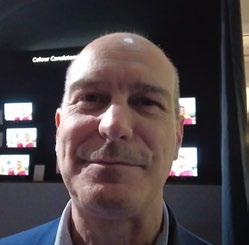
Anthony Kable Group Manager Sony Australia
One of the key new products that we’ve announced is the new Burano camera, it’s a new model in our CineAlta range of cameras. It’s a full frame camera that can record up to 8.6k resolution and can work with both P-Mount Sony lenses and third-party lenses as well as P-mount, PL-mount lenses.
The camera has an internal variable ND where you control the exposure and work with that on a full cinema system, it also has stabilisation within the body that will work with both E-mount and PL lenses. The camera itself also has an autofocus system, very similar to what is found in other Sony cinema line cameras. So it will do face detection and eye tracking and all those sorts of things they’re working with the E-mount lenses.
It is similar to Venice in a lot of ways with a slightly smaller body. It records two compact flash Type V cards, and will allow internal X OCN recording for working on posts. The new Burano is a flexible camera, a nice compact solution there and it is able to be mixed in with a whole range of other products.
So whilst the Venice systems are designed for a more crew type setup, the Burano is more for a single operator. This is designed with the ability for an operator to have all the controls and things on their one side.
INDUSTRY INSIGHT: SPORTS BROADCASTING
What are the top 5 trends rewriting the playbook for sports broadcasting?
The sports broadcasting technology market is set to grow to $101b in 2028.
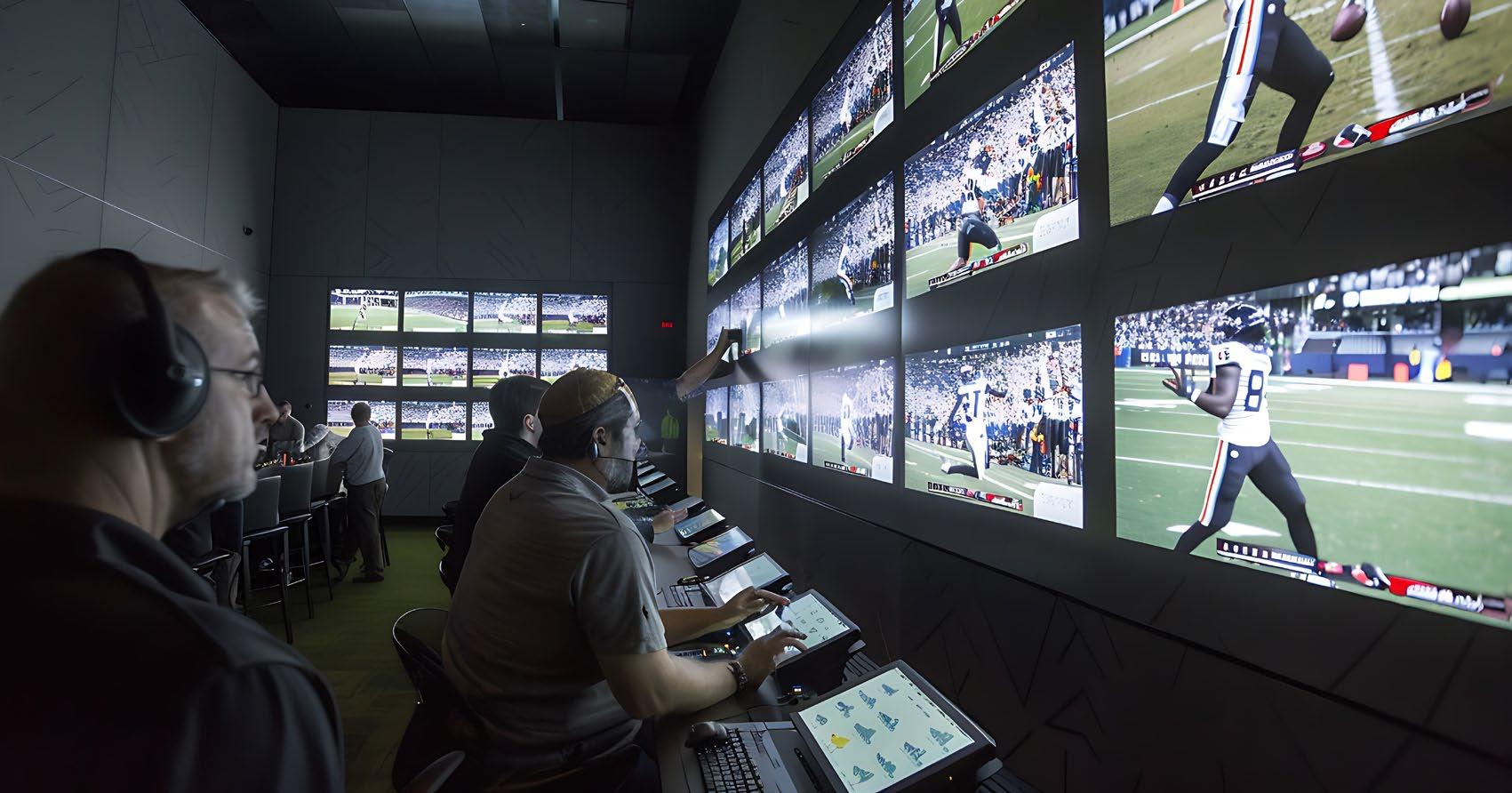
Watching live sports keeps millions of viewers worldwide enthralled and captivated, whether as a social bonding event for a collective adrenaline rush or a vicarious journey with their favourite athletes.
Led by headline events such as the Paris Olympic Games and the Euro 2024 football tournament, 2024 perhaps best encapsulated the enduring trend of live sports viewing. According to the International Olympic Committee (IOC), about 300 million people accessed Paris 2024 content via the Olympic website and app, whilst more than half the world’s population engaged through broadcast or digital platforms.
This surge in interest is fuelling growth in adjacent markets. According to a Business Research Company report, it is projected that the broadcasting technology market will reach $101b by 2028, garnering a 7.3% compound annual growth rate.
Technologies like 5G, artificial intelligence, machine learning, virtual and mixed reality, and wearables are driving this shift. Viewer demand is also pushing broadcasters towards more personalised, interactive, and immersive experiences.
In an exclusive interview with APB+, Abe Abt, senior product consultant at AJA Video Systems, highlighted the top five trends he sees that are likely to shape sports broadcasting in 2025 and beyond.
Trend 1 Advanced image processing
According to Abt, one of the emerging trends is the use of advanced colour along with image processing.
“Imagine watching a live cricket match or basketball game, and it looks as polished
We are going to see more and more IP-based sports production pipelines and broadcast facilities
as a big budget movie,” Abt said. “This is where live production is heading.”
Broadcasters are using real time colour correction and high-dynamic range (HDR) tools to “give viewers that post-production level shine without the wait.”
These tools handle the challenges in live event productions. Abt noted the “next level” ability to manage different colour spaces and dynamic lighting conditions on the fly, making the live sports watching experience more immersive.
This kind of technology was once reserved for big post-production houses, but now it is being brought straight into live sports broadcasts, and it is elevating the game. With this shift, Abt said the line between live and post-produced content is “getting blurrier by the day.”
Trend 2 The rise of REMI
REMI (Remote Integration Model) workflows are reshaping sports broadcasts, Abt said. “It is absolutely mind-blowing to see how much efficiency broadcasters can squeeze out of their operations with this model,” he said. Instead of hauling massive trucks and teams to every event, broadcasters are using IP networks to transmit live video and audio to centralised production hubs.

Moreover, this model does not skimp on quality. The high-quality live production stays but with less gear on-site and more remote staff, which allows companies to hire the best specialists for the job regardless of their location, Abt pointed out to the magazine.
Broadcasters can cover more events without the on-site logistics headaches. Since the live feeds are sent back to a
remote production centre, it is also easier to handle multiple events at once. “You can practically have a basketball game in one venue and a football match in another,” Abt remarked. “It’s a trend that is only going to keep growing,” he added.
Trend 3 4K and HDR adoption
Live sports broadcasts are getting a serious glow-up with 4K and HDR. Fans are no longer satisfied with basic HD; they want to feel like they are right there in the stadium. However, Abt noted that sports productions are still working with a mix of standard dynamic range (SDR) and HDR sources, and managing them on-the-fly can be difficult at times.
Real-time HDR and colour conversion tools are now making it possible to blend SDR and HDR footage seamlessly. “With the increasing availability of 4K-capable devices, we are only going to see this trend accelerate. Sports fans are in for a treat as these high-quality, immersive viewing experiences become the norm, and broadcasters find ways to make it all work smoothly,” Abt said.
Trend 4 IP Video and SMPTE 2110
IP video and the adoption of SMPTE 2110, are also shaking up the industry, Abt said. With SMPTE 2110, sports broadcasters can send uncompressed video, audio, and metadata over dedicated IP networks.
IP technology is also becoming more affordable. 25Gb networks, once seen as a high-end luxury, are now within reach of broadcasters, making it possible to move around uncompressed 4K video with ease. “The way this trend is shaping up, we are going to see more and more IP-based sports production pipelines and broadcast facilities, and it is going to make covering live events smoother and more flexible than ever before,” Abt told the magazine.
Trend 5 Multi-channel streaming
Not long ago, sports fans would just watch a game on TV, but now, they want to watch from their phones, tablets, social media sites, and every app imaginable — all at once. “That is where multi-channel streaming comes in, and it is changing the way sports broadcasts are delivered and consumed,” Abt said.
Instead of just one main feed, broadcasters now juggle multiple streams for all sorts of platforms — whether it is YouTube, Facebook Live, or direct-toconsumer apps. Some broadcasters let fans control their viewing, choosing camera angles on the golf course or switching between racers’ live cams.
Around 300 million people accessed the 2024 Paris Olympics Games content
GLOBAL
Abe Abt




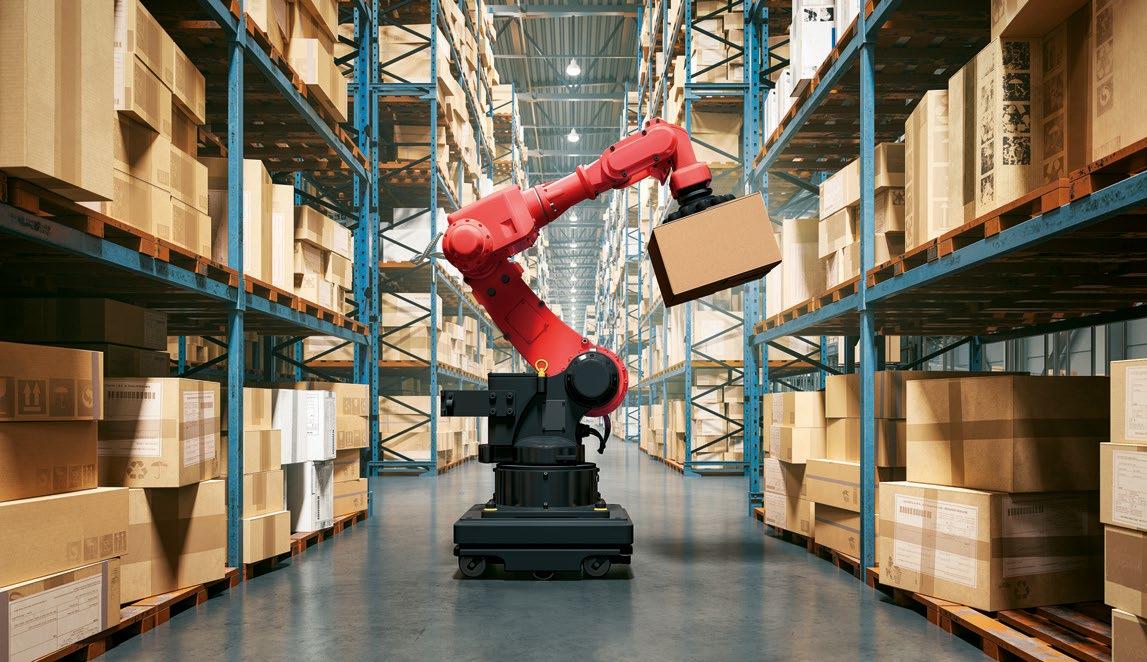

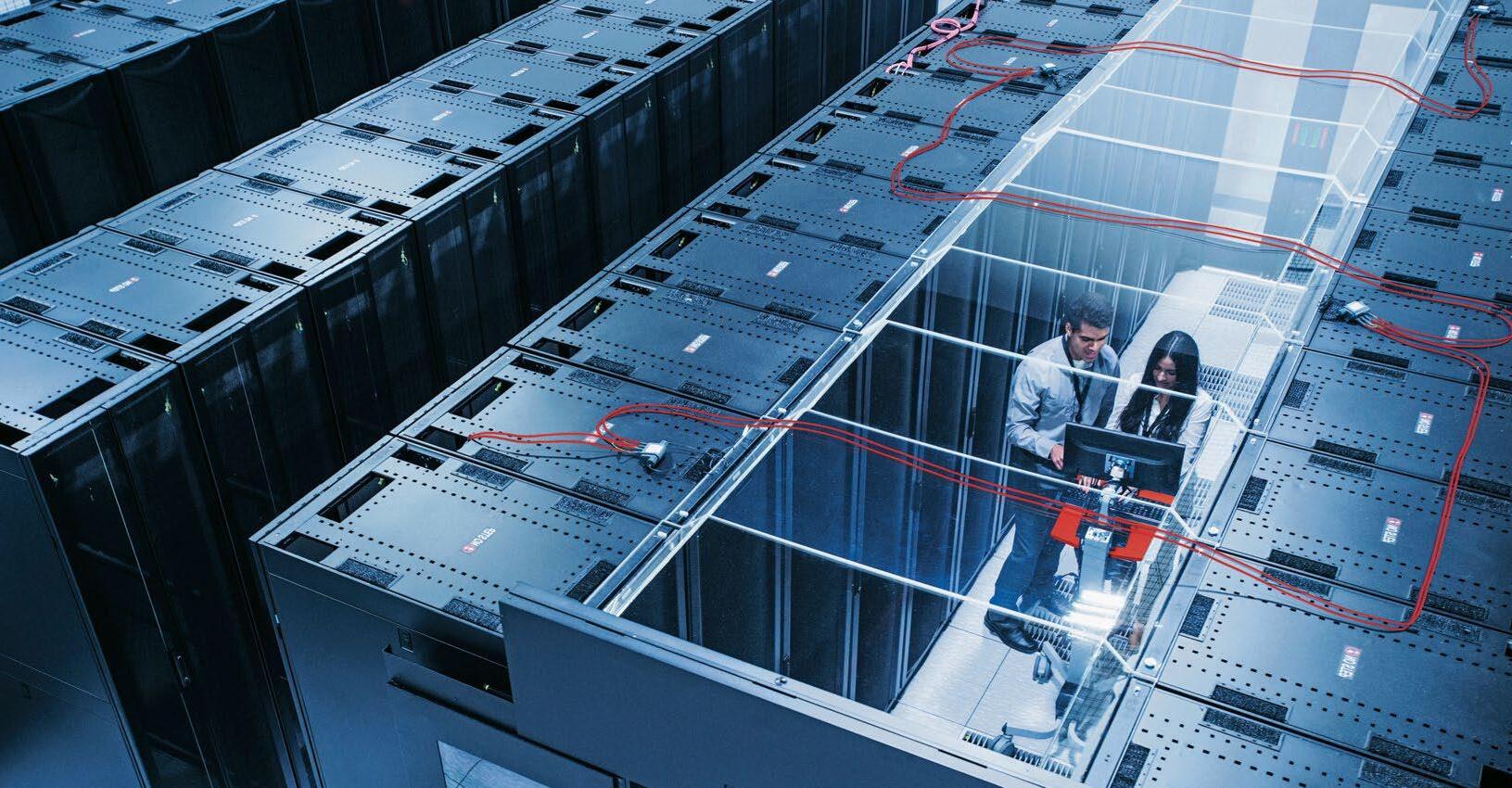
How IP broadcasting transforms live workflows in remote content delivery
The method is a compelling alternative to serial digital interface, which is limited in terms of flexibility and cost effectiveness.
The media landscape is in constant flux, driven by technological advancements that reshape how content is created, distributed, and consumed. Amongst these transformative forces, IP broadcasting stands out as a pivotal shift, impacting the industry on a global scale. This shift away from traditional serial digital interface (SDI) infrastructure towards IP-based solutions is driving innovation, streamlining international content distribution, and unlocking new opportunities for collaboration and audience engagement.
‘Compelling alternative’
For decades, SDI has been the backbone of broadcast infrastructure. However, its limitations in terms of flexibility, scalability, and cost effectiveness are becoming increasingly apparent. IP broadcasting now offers a compelling alternative, leveraging the ubiquitous nature of internet protocol to transport media signals with unprecedented agility and efficiency.
“We are part of a transformative time for traditional live media broadcast, an evolving landscape that puts enormous pressure on our traditional broadcast value chain from content distribution through to consumer distribution,” Jonathan Smith, business development director at Net Insight, told APB+ in an interview.
“A landscape where more content needs to be produced at the front end to create monetisation and engagement potential, and where a cross product of platforms and demographics need to be fed to realise the market potential — lots in and lots out.”
One of the most significant advantages of IP broadcasting is its inherent flexibility. Unlike SDI’s rigid matrix structure, IP networks allow for dynamic reconfiguration and routing of signals, enabling broadcasters to quickly adapt to changing production needs. This is particularly beneficial for remote production, where events can be covered from anywhere in the world with minimal on-site infrastructure.
“IP then becomes the unifying protocol when agility is needed,” explained Smith. “It can work in high-bandwidth, locally produced applications just as well as it can in high-quality centralised and remote production environments, and it can as easily pick up the production or serve as the transport protocol all the way to consumer distribution,” he added.
“It becomes a single approach to transport that can be flexible no matter what the workload is being carried, it

can be supported on local connectivity or across generic internet segments.
Benefits
Net Insight, a provider of IP media transport solutions, has been at the forefront of this transformation. Its Nimbra platform provides a comprehensive suite of tools for managing and transporting media over IP networks, supporting a wide range of formats and protocols, including SMPTE ST 2110, the standard for professional media over managed IP networks.
The benefits of IP broadcasting are shown in a case study with Shanghai Media Group (SMG). Struggling to upgrade its media network to support increasing bandwidth demands and future growth, SMG chose Net Insight’s Nimbra solution.
This upgrade, involving a move to 100 GbE, ST 2110, and JPEG-XS, increased the reliability of SMG’s fibre resources.
“SMG selected Net Insight’s solution after careful consideration,” said Rocky Yang, deputy director of engineering at the SMG Technology Centre.
“As a professional manufacturer of media transmission equipment, Net Insight has a highly regarded reputation in China, and we hope to expand our cooperation with Net Insight for cloud-based transmission applications,” Yang added.
The SMG case highlighted scalability as another advantage of IP broadcasting. IP networks can accommodate increasing bandwidth demands and new formats like 4K/Ultra HD and 8K, ensuring that broadcasters are future-proofed for the next generation of media experiences.
However, Smith noted that the transition
to IP broadcasting has been challenging. “It is not without challenges, network resilience, media awareness, and operational simplicity are not a by-default feature of IP networks,” the Net Insight executive said.
“This maximises our customers’ margins in the highly pressured and very dynamic broadcast industry of today.”
Industry developments
Other industry players, like Cisco and Imagine Communications, are also contributing to the IP revolution. Their integrated solutions, combining Cisco’s IP Fabric for Media with Imagine’s Magellan Control System, provide broadcasters with a robust and interoperable platform for managing IP-based workflows. This collaboration ensures integration and efficient bandwidth management, crucial for handling high-bandwidth content.
The integration between Imagine’s Magellan Control System and Cisco’s Nexus Dashboard Fabric Controller further enhances operational efficiency, providing a single point of management for IP Fabric for Media deployments.
This integration streamlines automation, monitoring, and visibility, simplifying the complexities of managing large-scale IP networks, Smith told the magazine.
The transition to IP broadcasting is more than just a technological upgrade; it represents a fundamental shift in how media is produced and distributed. By embracing IP technology, broadcasters can unlock new levels of flexibility, scalability, and efficiency, enabling them to create more engaging content and reach wider audiences.
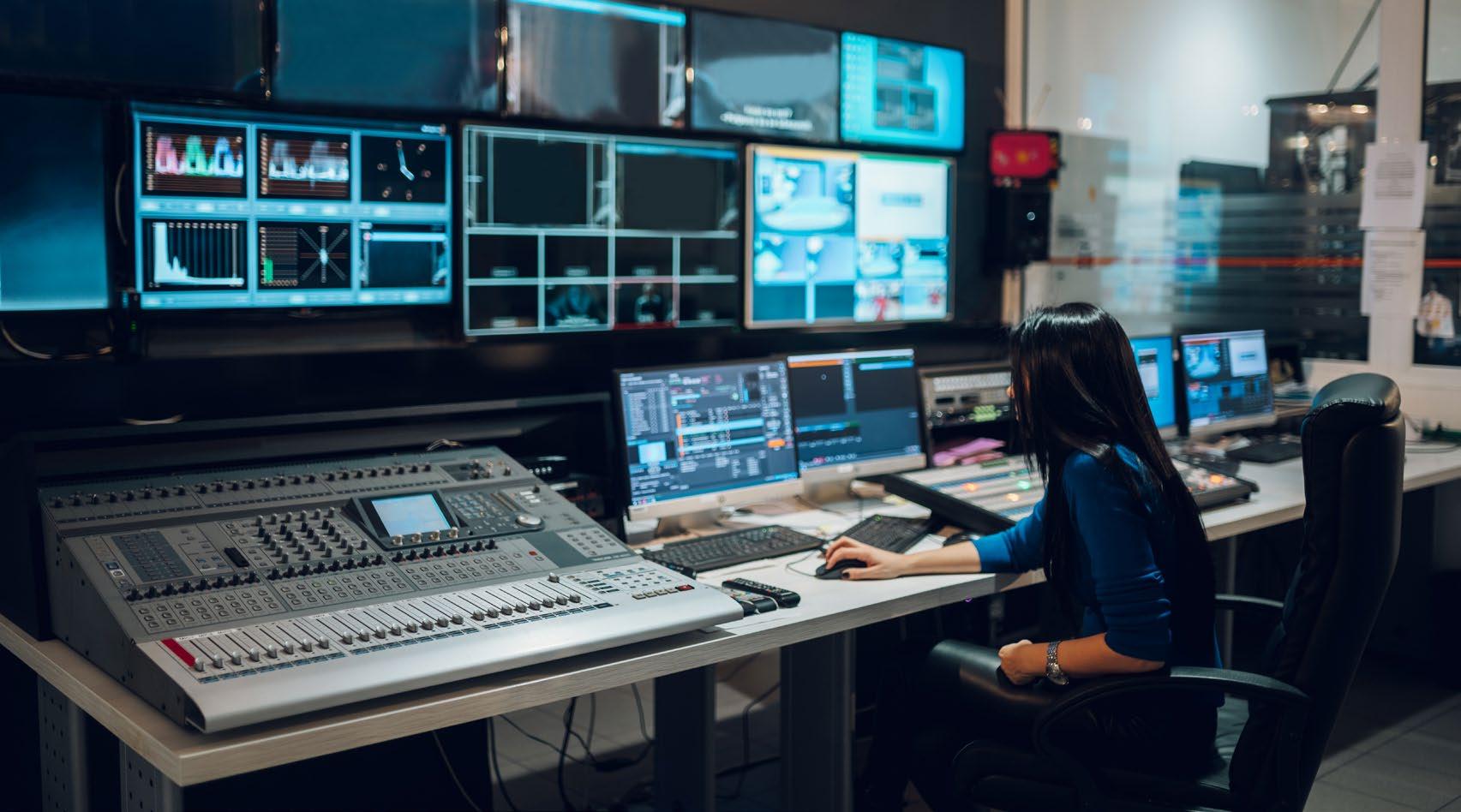
IP networks can accommodate new formats like 4K/Ultra HD and 8K
IP becomes the unifying protocol when agility is needed
CHINA
Jonathan Smith
ENABLING THE MOBILE SERVICE ECOSYSTEM
Innovative Digital Communications Technology Company offering MVNA /MVNE, Customer
Experience Platform & IoT solutions
MNO Integrations Subscribers
MVNOs Launched

Countries


Media leaders weigh AI’s rise against creative integrity
It could disrupt a quarter of all jobs over the next five years.
Many in India found on their social media platforms, a video of US President Donald Trump grooving to the beat of a popular Bollywood number, his lips synchronised to the song lyrics.
It is quite another thing that Trump would probably have never heard that particular song, and that it is a deepfake generated by artificial intelligence (AI). It was created simply because someone had the AI tools and the know-how, and far too much time on his hands.
Although the majority of people familiar with the capabilities of AI would instantly identify the video as a deepfake and laugh it off, the ethical implications of creating such deepfakes are frightening.
AI has become a huge threat to the media and entertainment (M&E) industry, and a large portion of the industry is expressing serious concerns about AI getting ahead of human intelligence and eventually taking over the most creative of functions.
Award-winning TV producer and writer Anthony Sparks stressed that the embrace of AI in the film and television industries is the biggest threat to the viability of the profession of film writing that he has seen in his career and lifetime.
“Not only is AI-produced film and television destructive to a unionised workforce by aiming to drastically reduce



our workforce, but it is also theft,” he added. Sparks said AI would consume the hard work of current and previous generations of writers, splicing and dicing it into “a regurgitated stew of nonsense that presumes human creativity has reached its limits.”
“AI is not only dangerous because of its job-killing capability in the creative industry; it is dangerous because it forever freezes our popular culture and limits it to the current moment in time,” he noted.
Industry crisis
The entertainment industry is one of the most forward-looking, constantly seeking new ways to capture an audience with a compelling story line. With the creation of streaming media and AI, how Hollywood is telling its stories has become erratic.
The Writers Guild of America (WGA) called this moment an “existential crisis” — recalling the 2023 prolonged strike that the writers carried out. The 2022 release of ChatGPT, a natural language processing tool driven by AI technology, was one of the leading forces that led to the strike.
The World Economic Forum predicted that AI would disrupt a quarter of all jobs over the next five years.
The problem lies in the fact that AI could potentially produce a first draft of simple prompts. Consequently, when writers were hired, they could be hired at a lower pay
rate because the first concepts would be completed for them.
Introducing AI frameworks
“AI lacks the passion, nuance, and perspective of work created by humans,” the WGA said. “By analysing existing scripts, any work created is always going to be a regurgitation of that work. These pieces will never have a truly unique perspective or vision,” the guild added.
Other issues revolved around reducing the work or pay for writers: streaming media’s shorter TV seasons and lower renewal rates of those shows leading to fewer steady jobs; smaller writers’ rooms leading to fewer hires and lower pay; and shrinking residuals for past shows that were streamed or syndicated.
A WGA report showed that the median weekly writer-producer pay declined by 23% over the last decade when taking in inflation.
Call to action
The Society of Motion Picture & Television Engineers (SMPTE) has urged the M&E industry to be more active and vocal in the debate about developing ethical AI systems. Doing nothing, or not doing enough, is not an option because “failure may come at a high human cost,” the organisation maintained.
“The time to discuss ethical considerations in AI is now, whilst the field is still nascent, teams are being built, products roadmapped, and decisions finalised,” SMPTE President, Renard T. Jenkins, told APB+ in an exclusive interview. “AI development is no longer just a technical issue, it is increasingly becoming a risk factor.”
This call for action forms a substantial part of the “SMPTE Engineering Report: Artificial Intelligence and Media,” which was produced alongside the European Broadcasting Union (EBU) and the Entertainment Technology Center (ETC).
The report was the result of a task force on AI standards in media that began in 2020. ETC AI and Neuroscience in Media Director Yves Bergquist said the group found “both an issue and an opportunity was … surfacing ethical and legal questions around deployment of AI in the media industry.”
Jenkins emphasised that the media industry are consumers of this technology.
“Whilst that alone is table stakes for the ethics debate, we also have a great responsibility in ourselves because we are able to touch millions with a single programme or a single piece of content,” he said.
Bergquist, who is also CEO at Corto AI, said, “I love looking at AI from within the media industry because the media industry is a technology industry. M&E has a massive track record in marrying human creativity with technology. It is also not a producer of AI. It is a consumer of AI products.”
Bergquist also noted that technology’s omnipresence has had “some very substantial consequences and impact on the way we live.” Thus, he said ethics must now be part of every technology discussion.
The median weekly writer-producer pay declined by 23%, a WGA report said
GLOBAL
Anthony Sparks
Renard T. Jenkins
Yves Bergquist










VIDEO STREAMING
Are streaming platforms losing users with every price hike?
Companies are pushing for ad-supported tiers to get more advertisers.
The video streaming industry is booming like never before.
Society is currently undergoing a revolutionary change in the way companies make and distribute content, as well as the way that consumers view that content. Indeed, streaming has become fully embedded into many people’s lives due to the growth of devices and services; and it has come to affect people’s lives — work, families, and even pastimes.
Current subscription numbers
According to a report by the Motion Picture Association of America, the US had nearly 340 million video streaming service subscriptions by end-2024, which is more than the country’s population. This is due to the increased popularity of streaming services and the shift away from pay-TV.
Similarly, the Asia-Pacific region is estimated to have had 642 million video service subscriptions, also known as subscription video-on-demand (SVoD). China (391 million) had the most SVoD subscriptions in the region, followed by India (150.6 million) and Japan (52 million).
The digitisation of media and the growth of broadband internet has transformed the streaming video industry, and the SVoD industry in particular. From its roots in user-uploaded short videos to full-length movies and shows of all sizes, the industry has seen unprecedented growth.


Thus, it is crucial to evaluate the costs versus benefits of the video streaming industry with regard to consumers, multichannel video programming distributors (MVPDs), and other companies competing for market space.
MVPD decline
As a result of the growing video streaming industry, MVPDs – a term that includes cable operators, multichannel-multipoint distribution services, satellite services, and satellite programming distributors that provide television channels for purchase –have been in steady decline.
Although the decline in traditional television is no surprise, the rate of the decline has been quicker than many suspected it would be. For years, it was believed that live sports would sustain MVPDs and allow them to compete with streaming services until streaming services made live sports accessible to viewers at a lower price.
The rise of video streaming and over-the-top (OTT) services comes with benefits and costs, including accessibility and ability to reach niche audiences. On the flip side, the major costs are escalating subscription costs, the required high-speed internet, negative social implications, the impact on MVPDs, and over saturation of services in the marketplace.
Legacy media companies, including

Disney, Warner Bros. Discovery, and Paramount Global, and Comcast initially entered the streaming market behind category leader Netflix with the objective of gaining subscribers, but are now searching for a return on their investments.
Their strategies include cheaper, adsupported models, platform bundles, and a crackdown on password sharing, though price hikes have shown more immediate results towards profitability. It means consumers are facing higher subscription costs with increasingly frequent price hikes.
“The years of prioritising user growth with low prices are over,” said Mike Proulx, vice president and research director at market research company Forrester. “When Disney reported a revenue increase in its most recent quarter (October to December 2024), it was primarily driven by higher subscription prices, since user growth and ad revenue alone will not sustain profitability,” he noted.
That puts the burden of revenue growth the consumers’ shoulders, and users are feeling the strain. In a survey of 3,000 consumers, 90% of the participants agreed that streaming video subscriptions are raising their prices more often than they were in the past, according to a Hub Entertainment Research report.
“Meanwhile, companies are pushing consumers towards ad-supported tiers — which are often cheaper than commercialfree streaming — in a bid to attract more advertisers,” Proulx added. “And many of those consumers are taking the option. Media companies have found that advertising has grown for streaming.”
Strategies from Disney Disney CEO Bob Iger said that the company had “earned” its pricing in the marketplace due to its creative contributions and product improvements. He noted that with past price increases, the company has not seen a “significant” number of customer departures.
“When we look across our portfolio, we’re seeing growth in consumption and the popularity of our offerings, which gives us the pricing leverage that we believe we have,” Iger said. “Frankly, the advertising tier is appealing because we can make as much off ad revenues as we make off the subscription fee on the ad tier.”
In December 2022, Iger highlighted that Disney took a unique approach to launching its ad tier, giving existing subscribers the option to either pay an additional $3 per month or accept ads.
“Nearly 95% of Disney+ premium plan subscribers paid to maintain ad-free streaming,” the CEO added.
Generally, price-pinched streaming consumers are willing to tolerate ads to pay lower subscription fees, Forrester said. Still, ad tiers are not immune to price increases. For example, Disney+ has periodically raised prices of its ad-supported plan.
The years of prioritising user growth with low prices are over
Mike Proulx
Bob Iger





Why broadcasters risk losing relevance without a clear OTT roadmap

In a moment of jest, we have probably said this to someone who is easily distracted and loses focus quickly, “You have the attention span of a goldfish”. A 2015 Microsoft study said the average human attention span has decreased from 12 seconds in 2000 to just 8.25 seconds. The goldfish, in comparison, has an attention span of 9 seconds.
In the intervening years since Microsoft’s study, the barrage of information arising from technology overstimulation has exacerbated the problem, and heightened the challenge for broadcasters to engage with increasingly fickle audiences.
For a region as diverse as APAC, the challenges can be multi-fold, as the over-the-top (OTT) paradigm continues to evolve. Consumer preferences, increased competition, and technological advancements have, over the past few years, shaped the OTT landscape in APAC and will continue to do so in 2025, only with greater impact, predicted Wissam Sabbagh, CEO, Mangomolo. He told APB+, “I see these trends strengthening, with evolving technology and more customer demands than we’ve ever seen before and artificial intelligence (AI) reshaping different workflows and providing a new dimension to personalisation and content distribution.”
This also means that traditional TV models are no longer sufficient to engage today’s digital-first audience, Sabbagh cautioned. Instead, broadcasters need to build a stronger OTT strategy

that aligns with shifting patterns, and includes elements such as investments in content personalisation, seamless user experiences, and a robust multi-platform presence.
“Without a clear OTT roadmap, broadcasters risk losing relevance to global and regional streaming giants,” the Mangomolo CEO added.
Monetisation strategies
On the monetisation front, the surge of ad-supported models and Free Advertising Supported Television (FAST) is an important trend driven by factors like innovation in ad delivery and subscription fatigue, said Sabbagh.
He highlighted, “Broadcasters must capitalise on digital advertising innovations, like ad targeting, programmatic ad buying, and firstparty data strategies. These will maximise monetisation opportunities and continue to deliver value to both advertisers and viewers.”
With more international players eyeing the lucrative APAC market, he also urged local broadcasters to differentiate themselves through hyper-local content, regional language offerings, and culturally relevant storytelling.
“Partnering with global OTT platforms and leveraging AI for subtitling, for example, can help broadcasters scale their reachwhile maintaining local audience engagement.”
However, this endeavour is not likely to ease this complexity anytime
soon. While attention spans may be shortening, paradoxically, consumer demand for more content is arguably higher than ever before.
Overwhelmed by the sheer number of options, price sensitivity and subscription fatigue then set in to drive churn. Disney+, for example, reportedly lost 700,000 subscribers after a price hike in August 2024. While this may prove to be a negligible number in the grander scheme of things, it does signify that broadcasters have a real challenge on their hands to keep viewers on their platforms on a consistent, long-term basis.
Playing to their strengths
Rather than competing directly with global streaming giants, broadcasters in APAC will be better served to focus on individual strengths to develop relationships built on trust and familiarity, recommended Sabbagh.
“Local broadcasters can pick up on audience insights to create content that resonates culturally and emotionally with their core viewers,” he explained. “This is particularly important in APAC, with local audiences having specific preferences over other regions.”
Another advantage local broadcasters hold is brand equity. Decades of credibility in their markets have made them a trusted source of news, entertainment, and live events. This recognition, said Sabbagh, goes a long way in driving engagement and loyalty across digital platforms.
Additionally, extensive archives of local content and strong partnerships with regional creators place these broadcasters in an advantageous position to offer exclusive, in-demand content that international players might not have.
“Repurposing existing content for digital consumption, through FAST channels, advertising-based video-on-demand (AVoD) platforms, or even licensing to third-party streamers, can unlock new revenue streams.”
Critically, the key to success in streaming, Sabbagh offered, goes beyond just having more content.
“It’s about having the right content targeting your chosen audience segment, and the beauty about modern platforms is that they can provide you with real time insights that can help you drive smarter content acquisition and distribution decisions,” he added.
Streamers risk churn when consumers are overwhelmed with options
They must capitalise on digital advertising and delivery innovations.
Without a clear OTT roadmap, broadcasters risk losing relevance to global and regional streaming giants
APAC
Wissam Sabbagh
Advertisers find stronger ROI as broadcasters invest in smarter digital platforms
Launching their own apps are projected to raise margins by 300 basis points by fiscal 2027.
At the recently concluded NAB Show in Las Vegas, several exhibitors were seen offering technology designed to help cost-burdened and revenue-inhibited broadcasters generate additional revenue in the dynamic advertising market.
Traditional linear broadcast is becoming increasingly digital, opening new opportunities for more sophisticated advertising that can help monetise content as it is distributed to multiple platforms. Preserving the overall viewer experience is going to garner top priority, and the industry is working towards perfecting its ad-insertion technology.
Boosting revenue streams
There are several ways in which broadcasters can boost revenue – by leveraging digital platforms, diversifying revenue streams beyond traditional advertising, and optimising content distribution and monetisation strategies. Digital platforms offer opportunities to increase advertisement revenue, subscription income, and engage viewers more effectively.
However, the industry’s long-term growth will depend on its ability to compete with over-the-top (OTT) platforms and adapt to shifting consumer preferences.
Revenue for TV broadcasters was virtually stagnant between the fiscal years 2022 and 2025 as consumers increasingly opted for digital content such as OTT applications on TV or mobile, or pure-plays such as YouTube and Instagram.
TV broadcasters, on the other hand, have rallied to counter the likelihood of stagnation of revenue by launching their own digital platforms in the shape of mobile apps or dedicated apps for smart TVs, for content such as live sports and news. These steps are projected to raise the broadcasters’ margin by 300 basis points by fiscal 2027, thanks to economies of scale. This would move their profitability closer to the preCOVID 19 pandemic levels.
“Rising subscription revenue has also been supportive,” said Ankit Haku, Director, CRISIL Ratings. “As a result, digital revenues of these broadcasters grew 15% on average over the fiscal years 2022 to 2025, and will continue to grow in double-digits over the next two fiscal years. With the linear broadcasting segment nearly flat, this will increase the revenue contribution of digital to 25% by fiscal 2027.
“The growth in the digital segment is also helping broadcasters capture higher advertisement revenue from sectors such as



fast-moving consumer goods, automobiles, e-commerce and real estate. These segments have gravitated towards digital because of shifting consumer consumption preferences as well as the ability of the digital medium to deliver targeted and personalised advertisements through data-driven analytics.”
In 2025, local business investment in digital marketing is accelerating at an unprecedented pace. According to eMarketer, traditional linear TV advertising is expected to shrink by US$4 billion between now and 2027.
Despite these challenges for terrestrial media, total ad spending is still projected to grow by 4.5% in 2025, largely fuelled by a double-digit surge – at least 12% – in digital advertising, said eMarketer.
The takeaway
The path to revenue growth this year will meander through digital expansion. And for broadcast professionals, this means evolving their sales strategy to align with where advertisers are putting their dollars.
“To drive digital revenue growth, your station’s digital solutions must align with what advertisers are actively seeking,” said Chris Brunt, Director of Digital Revenue and AI, Jacobs Media, Wisconsin.
“Across all market sizes, businesses are significantly increasing their investment in OTT/CTV (smart TV advertising), influencer marketing, and social media campaigns. If you are not fluent in these evolving digital strategies, you risk missing out on valuable opportunities.”
Consumers are increasingly favouring event-based viewing and on-demand
streaming content experiences instead of traditional linear TV consumption. This has contributed to significant declines in pay-TV revenue, which is projected to drop to US$15 billion annually by 2027, according to Price Waterhouse Coopers.
Advertisers can streamline their ad spend strategy to get maximum value for their buck. In February this year, the ad sales business of Charter Communications, Spectrum Reach, announced the full-market rollout of its newest planning tool, Audience Reach Optimizer (ARO).
The tool is designed to boost the effectiveness and efficiency of advertisers’ campaigns, delivering their TV ads to their intended audience.
ARO leverages Spectrum Reach’s data insights in a privacy-focused way to simplify the process for advertisers to target audiences more efficiently at the household level. The new planning tool identifies new opportunities for multi-screen engagement across traditional TV and streaming platforms, maximising campaign impact and audience engagement.
“We are delivering solutions that make it easier for advertisers in today’s competitive advertising landscape,” said Jason Brown, Senior Vice-President & Chief Revenue Officer for Spectrum Reach.
“By providing unique, data-driven insights on campaign reach and frequency through tools like ARO, we empower advertisers to fine-tune their targeting strategies, optimise media spend and maximise audience engagement with information they cannot access elsewhere. Ultimately, this insight drives better business outcomes for our clients.”

Consumers prefer event-based viewing over traditional linear TV GLOBAL
Ankit Haku
Chris Brunt
Jason Brown
Hybrid models enable flexible content creation with real-time monitoring tools
Cloud-based solutions allow broadcasters to scale operations without substantial upfront hardware investments.
No matter what business you are in, any technology that promises to offer flexibility, scalability and cost-efficiency, is bound to pique your interest. For the broadcast and media industry, the transition to cloud-based broadcasting has been accelerating in recent years as broadcasters move away from the constraints of traditional hardwaredependent systems.
In response, cloud solutions providers are striving to provide best-in-class solutions, and many are doing so via a number of high-profile collaborations.
TAG Video Systems, for example, recently announced a partnership with Tencent Cloud that allows customers to leverage Tencent Cloud’s infrastructure and suite of cloud services to deliver enhanced media services to viewers.
Partnerships
Also working with the likes of leading cloud platforms such as AWS, Google Cloud, and Azure, interoperability is a core priority for TAG, shared Golan Simani, Director of Cloud & Tech Operations.
He told APB+, “Our technology is built for flexibility and scalability, enabling smooth collaboration with providers such as Tencent Cloud, AWS, Google Cloud, and Azure to deliver best-in-class solutions.
“To achieve seamless integration, we maintain close partnerships with these vendors, continuously updating our M&E engineering teams on product developments and sharing roadmap plans. We identify optimal integration points between TAG’s solutions and cloud services, ensuring alignment.
“For instance, we regularly update our certified instances to leverage the latest CPU advancements, reducing costs while integrating with external storage, data, and automation services for enhanced control.
“This collaborative approach ensures compatibility with emerging technologies while providing customers with robust support and workflow optimisation, eliminating concerns about cloud compatibility.”
Where Tencent Cloud is concerned, the APAC region has long been a key market and the company sees the partnership with TAG as another step in supporting the transformation and transition of media and broadcast companies to the cloud.
Specifically, it is addressing the need for

greater scalability, flexibility, and costefficiency in an increasingly competitive media landscape, which is driving the transition to cloud-based workflows in APAC, suggested Liyen Gan, Customer Success Team Lead APAC, TAG.
“Our cloud-based monitoring solutions allow broadcasters to scale operations without requiring substantial upfront investments in hardware. Our platform’s adaptability is particularly valuable in the APAC market, where businesses seek cost-effective solutions while maintaining the ability to respond to rapidly changing market conditions.”


While acknowledging that challenges such as network reliability, data regulations, and latency constraints remain key hurdles for cloud adoption in some APAC markets, TAG is helping broadcasters in APAC navigate these barriers by offering hybrid workflow solutions.
From a licensing perspective, TAG offers a zero-friction model that allows customers to access all TAG solutions under a single license across multiple environments, be it on-premises or in the cloud. For greater flexibility, users can also choose between OPEX or a hybrid OPEX/CAPEX financial model.
“This approach aligns seamlessly with Tencent’s on-demand option, enabling customers to build dynamic environments with cost predictability,” explained Gan.
From an infrastructure standpoint, TAG’s
MCS (Media Control System) facilitates hybrid environment management, consolidating data and bridging video formats between on-premises and cloud workflows.
“As cloud adoption continues to accelerate in the region, TAG remains committed to delivering localised, tailored solutions that address these unique challenges while empowering broadcasters to innovate,” added Gan.
Beyond innovation, TAG’s cloud monitoring system is also designed to deliver substantial cost savings by eliminating high operational costs and limited scalability.
While traditional broadcast infrastructures require significant capital investments in hardware, on-premises servers, and IT resources for maintenance, TAG’s cloud-based solution leverages a pay-as-you-go pricing model that ensures customers only pay for the resources they use. These hybrid deployments offer the flexibility to maintain critical workflows on-premises while benefiting from cloud scalability and cost optimisation.
Gan continued, “Moreover, real-time monitoring and remote accessibility reduce the need for on-site maintenance. As the demand for over-the-top (OTT) video streaming grows, TAG addresses evolving needs with innovations like adaptive monitoring solutions to reduce infrastructure costs.
Latency remains a problem in many APAC markets
Golan Simani
Liyen Gan
AI finds its place in newsrooms as teams explore new ways to deliver content
For instance, Wolftech News allows a single operator to create news stories in multiple languages in a few minutes.
While ChatGPT may have been encouraged to provide a rather grandiose outlook on how artificial intelligence (AI) is revolutionising the broadcast and media industry, the above statement is not without basis.
From streamlining post-production workflows, powering real-time content recommendations, and enabling innovations like virtual news anchors and automated highlights, AI is becoming increasingly ubiquitous in its deployment across the broadcast and media landscape.
Peter Docherty, CTO & Co-Founder, ThinkAnalytics, said in an exclusive interview with APB+, “The adoption of AI for personalisation, content discovery, and targeted advertising, as well as optimising editorial workflows, is continuing apace as content owners, broadcasters and streaming providers look to increase engagement with viewers and monetise their investments in content and rights.”
It is about finding the optimal balance in adoption. “The unique combination of AI and human expertise working together can deliver significant benefits across many different business areas,” he said..
“These include personalising editorial selections where the editors can select the list of titles that they want to promote, and the personalised algorithms make sure the best of these titles is at the start of the list for each individual viewer,” he added.
Algorithms can also help editors select content for editorial campaigns or produce an initial editorial campaign list for editors to make the final selection.
For those looking to quickly jump on


the FAST bandwagon, AI can be used to create FAST channels automatically but still give the human curation team the ability to enter the business rules that they want to be applied, and/or alter the schedule before it is pushed into production, Docherty said.
As to how bias in recommendation engines can be reduced, he replied, “Our customers know it is a priority to monetise all their investments in content, however niche it might be, but also balance marketing and commercial promotions with consumer-friendly recommendations, as well as ensuring a wider variety of the catalogue is being watched.
“There is no single best way of presenting content to viewers and the key is having a variety of techniques which can help deliver the best experience to the viewer while also meeting the commercial and business objectives of the operator.”
Looking ahead, Docherty also predicts generative AI playing an increasingly key role in the content personalisation space.
This includes offering additional dimensions to personalisation such as natural language conversational voice/ chatbots and other solutions that combine generative AI, personalised enriched content metadata and natural language interaction.
Reinventing workflows
Rather than focusing solely on AI-generated content, Avid is leveraging AI to enhance efficiency, streamline processes, and unlock new creative potential within existing production environments.
Shailendra Mathur, Vice-President

of Architecture & Technology, Avid, told APB+, “Media companies are increasingly prioritising business efficiency over AIgenerated content. AI is providing creative assistance to speed up the creative flow and enable tasks that were previously impossible.
Over the past few years, Avid has focused on automating the most time-consuming and high-cost media creation manual processes based on a study of workflows. The AI-based solutions provided, Shailendra identified, include text-based editing, multilingual dialogue-based search with highly scalable collaborative architecture, automated captioning, and metadata enrichment.
He added, “Avid is focused on tools that provide creative assistance with a human in the loop and with creative control, following responsible AI tenets that respect various compliance laws, regulations, and ethics. The implementation is done through a common shared technology framework called Avid Ada, which is exposed to users in products using persona-based design.
“Additionally, Avid is opening up new APIs to integrate unique third-party offerings that augment the workflows. Working in collaboration with third parties brings AI innovations to our customers at a much more rapid pace.
“The goal is to operate the AI processes close to the data and application for practical reasons, but where it makes sense, make secure calls to external services if that technology is not available to run close to the data.”
Storytelling possibilities
Having worked with AI for over a decade, the company has experienced the challenges in bringing AI into established newsroom and editorial workflows.
For instance, Wolftech News allows a single operator, in a few minutes, to create news stories in multiple languages. Previously, before assisted story writing tools were available in Wolftech News, it could take 30 minutes to hours for multiple translators to read a full story for breaking news, rewrite it in a new language, summarise, QC, and get sign-off.
Shailendra also highlighted how some unscripted productions have an extreme shoot ratio, including an Avid customer, who claimed a 2000:1 shoot ratio.
He suggested, “It is practically impossible to log, sift, and search that amount of content using traditional metadata logging techniques. For that extreme shoot ratio, it would take approximately one person a year to log that footage, or 67 people one week, for it to be searchable.
AI tools can provide automated captioning and metadata enrichment GLOBAL
Peter Docherty
Shailendra Mathur
DR AMAL PUNCHIHEWA
Television needs a new unified coding framework that can also cut complexity and cost
When discussing the future of television, it is important to recognise that one of the key technologies shaping both television distribution and consumption is video coding. Broadcast and media services rely on innovations in communication and compression technologies. Communication technology expands the transmission bandwidth, whilst compression technology reduces the data size to fit within the available bandwidth.
Communication and compression technologies work with each other but sometimes compete with each other. When communication speeds increase via fibre and 5G, compression technology becomes less important. However, video codec standardisation must be well aligned with communication technologies.
The future of video coding
As an IEEE-BTS Distinguished Lecturer and a member of the Media Technology Network of the Institution of Engineering and Technology (IET), I recently gave a two-hour lecture to undergraduate students of Peradeniya University in Sri Lanka; they are studying image and video coding. Some of the key topics that were covered in my lecture aimed to answer the following: What drives video coding, the evolution of codecs, quality evaluation, and more importantly, understanding the problem that students and other industry professionals are trying to find a solution for.
The students themselves asked several pertinent questions, such as “How do GPU and CPU manufacturers adapt to evolving video codec standards, especially as codecs become more complex?” Other questions included how manufacturers handle these changes over time especially in mobile devices since new processors have dedicated hardware for encoding and decoding.
In the 1980s, I started my career as a computer engineer and had the opportunity to deal with computers that could handle special graphics, including Commodore’s Amiga. Nicolai Otto, project management director at MainConcept, mentioned how one of the first products offered by his company was a motion JPEG decoder for Commodore’s Amiga in 1993.
As a signal processing expert with a focus on image and video coding, I have followed with interest on how codecs have been deployed and implemented through various life cycles, and how they have evolved over the four decades. Samsung, for example, says they make consumer devices for every conceivable purpose, such as mobile phones and large-screen TVs. If a codec is used in the market, Samsung needs to support all devices; hence, Samsung, in its capacity as a corporate and tech giant, has been contributing to codec standardisation and investing in it.
As screen sizes of television displays continue to increase, more pixels are needed. In turn, more efficient codecs are required to manage everincreasing data from television spatial definitions. As a result, new generations of codecs typically achieve bit rate reductions of 30% to 50%.
However, as of 2025, the market for Ultra High Definition (UHD) television has not fully materialised. UHD-1, often referred to as 4K, has seen limited market adoption, and the rollout of UHD-2, or 8K, is progressing more slowly than expected.
Along with the increase in spatial definition, factors such as extended colour gamut (Wide Colour Gamut or WCG), high dynamic range (HDR), and high frame rate (HFR) also contribute to a higher data rate. Additionally, film grain, a common challenge in both legacy and modern content, requires a substantial amount of bits to accurately deliver. Today, content is consumed on both large television displays and portable devices such as mobile phones, tablets and laptops. These portable devices do not require 8K or 16K spatial resolution, as the proximity to the eye for a given screen size makes such high resolutions unnecessary.

Dr Amal Punchihewa Advisor and Technical Consultant Asia-Pacific Institute for BroadcastingDevelopment
Recently, video services have expanded through over-the-top (OTT) platforms, with one of the biggest challenges being the growth of Free Ad-Supported Television services (FAST) services, which offers free video content in return for the viewing of advertisements.
FAST services have been growing, but one unique aspect is that they typically use low resolutions, such as 720p and older codecs like H.264, as they are designed to operate at a very low cost.
Video codecs such as MPEG-2, H.264, and H.265 have already been widely implemented and some codec implementers are currently working on H.266 for video compression, and exploring the viability of the nextgeneration video codec, H.267.
MainConcept executive Nicolai, during his presentation at the ITU workshop, segmented the codec life cycle into four phases: Standardisation, Implementation, Adoption, and Application.
The first phase involves the initial period with standardisation organisations like ITU and ISO, lasting about three to five years, including the research phase. Next, the document is handed over to companies for implementation, marking the implementation phase. Developing an encoder can take significantly longer than two to three years. Within two to three years, the standard specifications evolve into a minimum viable product that manufacturers can begin shipping to interested customers.
Customers then enter the adoption phase alongside manufacturers. During this phase, manufacturers promote the codec, access its value, evaluate what it can deliver, and determine its potential for their anticipated applications or other use cases within the industry.
After a few more years, the codec hopefully reaches the market and transitions into the application phase. This is when users truly figure out how to utilise the codec, and it can last for a long time, as we have seen with Advanced Video Coding (AVC) or H.264.
Challenges and suggestions
Recently, the industry has seen a decline in adoption, rising costs of patent pools and royalties, as well as increased latency and complexity in codecs. It is crucial to evaluate whether new codecs provide sufficient coding efficiency to offset these negative trends.
Considering the total time required for a codec to be adopted and reach the application phase, Nicolai suggests considering to parallelising the codec specification process with reference implementations to reduce time to market and improve predictability.
Another suggestion made during the ITU coding workshop was to adopt a unified framework. Whilst creating a unified design is challenging, it is considered valuable by the standards community. Exploring a unified framework to integrate various coding tools proposed by different proponents into a single design could reduce complexity and cost. A historical example of this kind of collaboration is the removal of complex, low-value techniques during the H.264 standardisation process, which highlights the benefits of unifying tools.
With the emergence of several video standards, conducting subjective video quality assessments, particularly when comparing them, becomes a challenging exercise. As a result, there has been a shift towards using objective video quality assessment techniques.
Peak Signal-to-Noise Ratio (PSNR) has traditionally been used as a metric for image and video quality assessment. However, it does not strongly correlate with human perception or subjective evaluation. It is recommended to use a quality metric that more closely aligns with what humans can actually perceive. The video and media industry needs a quality metric that places greater emphasis on perceived quality.


